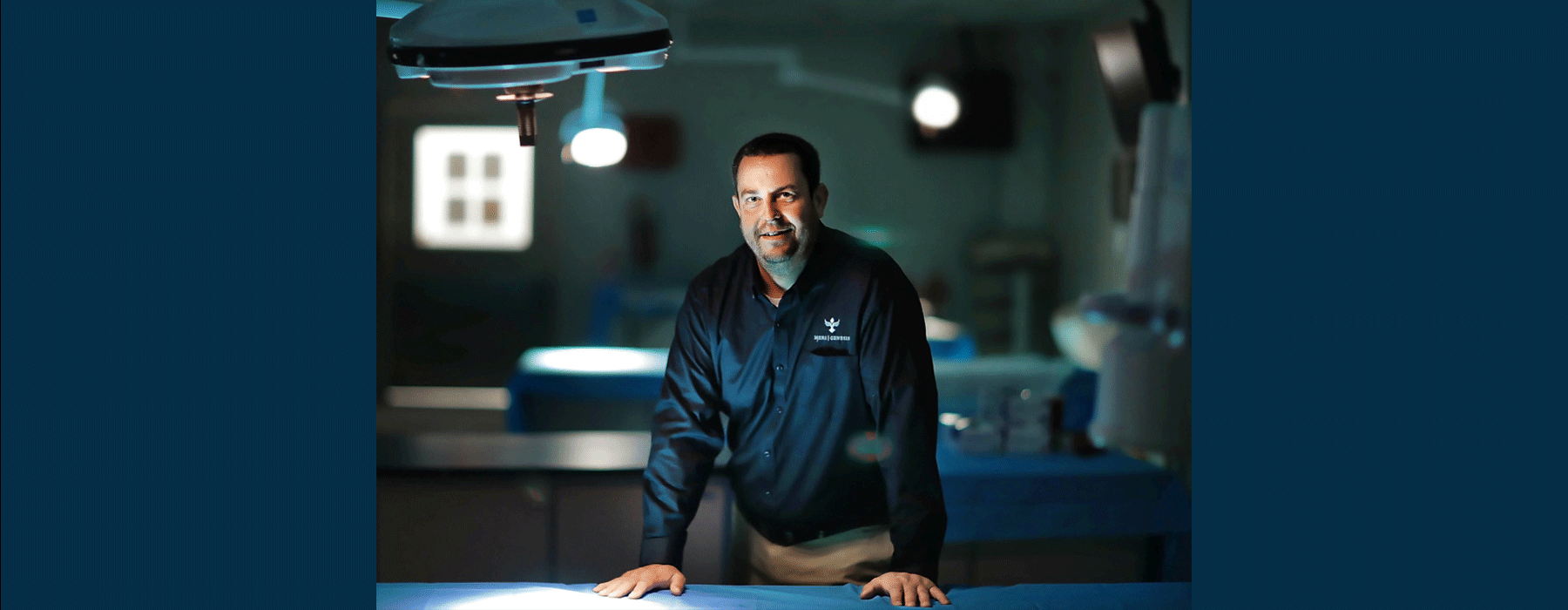Thousands of doctors train in Memphis

06.24.19
Daily Memphian
Thousands of doctors train in Memphis each year on human cadavers
A new medical innovation can go from A to Z of the research and development process without ever leaving the Memphis Medical District.
A key reason is the readily available human bodies just down the street from the district’s hospital systems. About 190 donated human cadavers wait just off Union Avenue near Downtown Memphis.
The bioskills lab and non-transplant tissue bank is tucked behind the Dryve Cleaners on Union at the intersection of South Cleveland Street, near University Methodist Hospital.
Originally a post office, the building was transformed into the Medical Education & Research Institute, or MERI, in 1994 through the vision of Dr. Kevin Foley.
For the past 25 years, doctors from across the country have been coming to Memphis to practice new procedures and test new medical devices on human bodies that have been donated after death to advance medical research and education.
“The MERI is really a school. It’s a place where teaching for doctors, EMTs and nurses can be done,” said Dr. Adam Arthur, a neurosurgeon with Semmes-Murphey Clinic and medical director of neurosurgery at Methodist University Hospital.
Arthur used MERI to conceive, test and eventually secure Federal Food and Drug Administration (FDA) approval as the principal investigator in a clinical trial for Sequent Medical Inc.’s Woven EndoBridge (WEB), a minimally invasive intravascular therapy for aneurysms.
Memphis was the only city in the worldwide study where two sites were enrolling patients — Baptist Memorial Health Care Corp. and Methodist Le Bonheur Healthcare.
Following approval, dozens of physicians came to MERI for WEB training.
“I’ve personally taught hundreds, maybe thousands, of neurosurgeons at the MERI on many devices,” Arthur said. “It’s a funny thing that Memphis is a spot on the map for this kind of thing.”
In 1992, Foley set out to create an institution of learning using cadaver material that would become instrumental in turning open surgery into minimally invasive surgery.
“The inspiration for hands-on training in an anatomy lab came when, at Walter Reed Medical Center in Washington, I noticed a gap in physicians’ continuing medical education and real-world training,” Foley said. “When I came to Memphis to work for Semmes-Murphey Neurologic & Spine Institute, I wanted to create a ‘hands-on’ training facility so established surgeons in any subspecialty could learn the latest techniques.”
The six labs within the facility at 44 S. Cleveland mimic an operating room environment with surgical tables, X-ray machines, drills and other instruments used in surgery.
Fifty to 60 surgeons can learn a new procedure at one time. Television screens are paired with each surgical table so the surgeon students can get a better view of the lead faculty surgeon.
In 2018, MERI hosted 1,325 courses, training 28,985 doctors.
“Engineers and surgeon designers need to be able to evaluate their inventions in human anatomy in order to properly assess form and function,” said Mike Sherman, president and CEO at MB Innovations Inc., a medical technology development company in Memphis that provides research, design and development services to established firms.
Without the ability to properly validate a new concept, be it an instrument or implant, in a cadaver, the surgeons and engineers would be “flying in the dark,” Sherman said.
“Memphis has really been a haven for medical device development,” said MERI executive director Jason Owens.
The biotech and medical device companies generate more than $46 million in annual taxes for local and state governments and produce about 16,820 regional jobs, according to an economic impact analysis by Younger Associates.
Procedures can be performed on a cadaver and projected in real time to the auditorium.
“It may be a procedure they’ve been preforming for years, but a new product has nuances, so they need to work through it,” Owens said.
The ability of surgeons and engineers in Memphis to have easy, immediate access to a cadaver facility like MERI is critical to driving rapid innovation, Sherman said.
“Being able to evaluate rapid prototypes produced by 3-D printing technology in a local facility such as MERI cuts the iterative design cycle-time of product development from months to weeks, sometimes from weeks to days,” he said. “The key to developing new, innovative products is this ability to evaluate, redesign and repeat in a rapid manner.”
Since simulators can sometimes be too perfect, it is really important to have a human donor as part of the device proof-of-concept cycle, Owens said.
“People are all made differently. (Cadavers) are more life-like,” he said.
MERI could not have a temperature-controlled room, essentially a freezer, full of human cadavers without its willed whole-body donation program, Genesis.
“There is a critical, symbiotic relationship between MERI and Genesis,” Owens said. “It is essential that we have donors to continue research and development.”
Genesis has provided enough donors to support medical research and training demand since 2006. The program was first launched in 1999. MERI covers the cost of the death certificate and cremation for all Genesis donors.
“There’s the thought that medical education impairs a procedure. No one wants to be quote-unquote ‘practiced on,’” Arthur said. “But, when done right, medical education enhances medical care.
